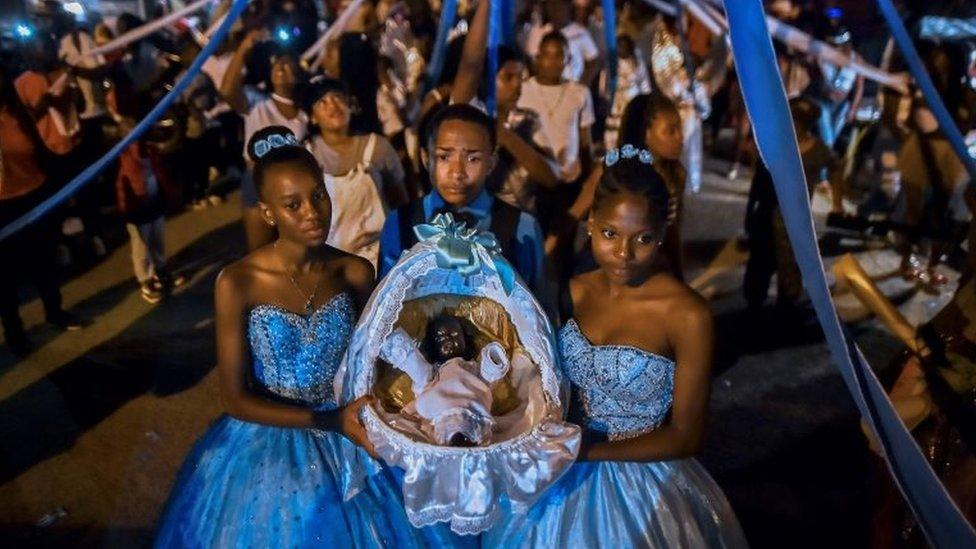The Afro-Colombian village which celebrates Christmas in February
- Published

At the centre of the celebrations is a wooden statue of baby Jesus
Residents of the Colombian village of Quinamay贸 have been celebrating Christmas with a procession featuring a statue of a black baby Jesus.
Villagers say the tradition dates back to the days of slavery when their ancestors were banned from marking Christmas on 24 December.
They chose mid-February instead and the tradition has been preserved ever since.
Fireworks, music and dance all form part of the colourful celebrations.
"The people who enslaved us celebrated in December and we were not allowed to have that day off, but were told to choose another day," the event's co-ordinator, Holmes Larrahondo, said.
Villagers say the young generation has been key in preserving the tradition
"In our community we believe that a woman has to fast for 45 days after giving birth, so we celebrate Christmas not in December but in February, so Mary can dance with us," Mr Larrahondo added.
Fifty-three-year-old teacher Balmores Viafara told Agence France Press news agency that as a result 24 December for him is "like any other day", while the Adorations, as the celebrations are called, are "a party at which we pay respect to our God in our way".
As part of the celebrations, villagers go round the houses "searching" for baby Jesus, who is represented by a wooden statue which is kept safe by one of the villagers in her home for the rest of the year.
Once the statue has been found, it is paraded around the village by residents of all ages dressed up as angels and soldiers.
Dancers perform a dance called fuga (escape) in which they imitate the shuffling steps of the shackled slaves.
The festivities end in the early hours of the morning.
The tradition dates back to the days of slavery
A "Fuga" dance remembers the steps of shackled slaves
Fireworks play a big part in the celebrations
All images subject to copyright.